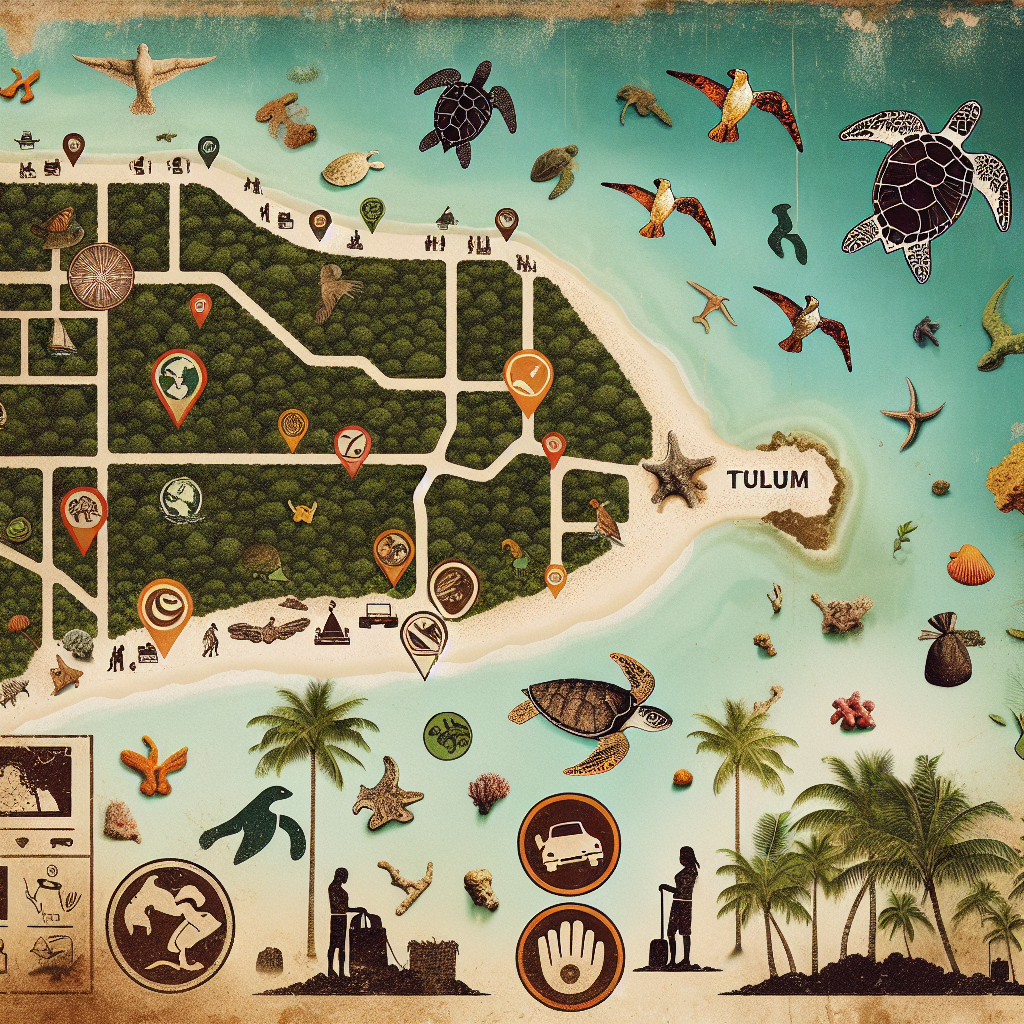A Tourist’s Guide to Protecting Endangered Species in Tulum
Understanding Tulum’s Biodiversity
Tulum, located on Mexico’s Caribbean coast, is a treasure trove of natural wonders, boasting a rich biodiversity that includes many endangered species. The area’s unique ecosystems, such as coastal dunes, cenotes, and mangroves, are home to flora and fauna found nowhere else in the world. Acknowledging the importance of preserving these natural habitats is essential for tourists looking to engage with Tulum responsibly.
Key Endangered Species in Tulum
-
Leatherback Sea Turtle
- Status: Critically Endangered
- Tulum’s beaches are nesting sites for the leatherback sea turtle, the largest of its kind. Conservation efforts focus on protecting nests from poachers and environmental hazards.
-
Jaguar
- Status: Near Threatened
- As the largest cat in the Americas, the jaguar plays a pivotal role in maintaining the health of local ecosystems. They are mostly found in the nearby Sian Ka’an Biosphere Reserve.
-
Margay
- Status: Near Threatened
- Residing within Tulum’s jungles, the margay is a small, elusive cat whose survival is threatened by habitat destruction and illegal hunting.
-
West Indian Manatee
- Status: Vulnerable
- These gentle giants inhabit the coastal waters around Tulum. Protection entails safeguarding their habitat and reducing boat-related injuries.
- Various Bird Species
- Status: Various Levels of Concern
- Species like the Yucatán parrot and roseate spoonbill are at risk due to habitat loss. Birdwatching in protected areas can help raise awareness about their conservation.
How Tourists Can Make a Difference
-
Choose Eco-Friendly Accommodations
- Opt for hotels and resorts that prioritize sustainability, conservation, and community involvement. Look for certifications from organizations like the Rainforest Alliance or EarthCheck.
-
Participate in Conservation Programs
- Engage with local organizations that focus on wildlife rescue and rehabilitation. Volunteer with groups specializing in turtle conservation to help protect nests during nesting season.
-
Practice Responsible Wildlife Viewing
- Keep a safe distance from wild animals, refrain from feeding them, and use binoculars for birdwatching. This minimizes stress on their habitats and promotes their natural behaviors.
-
Respect Protected Areas
- Tulum is surrounded by nature reserves and protected areas. Stick to marked trails to avoid damaging native plants and disturbing wildlife habitats.
- Support Local Artisans
- Purchase souvenirs that contribute to conservation efforts. Many artisans create items from sustainable materials or produce items that highlight local culture without harming the environment.
Eco-Tourism Activities in Tulum
-
Snorkeling and Diving in Protected Reefs
- The Mesoamerican Barrier Reef is a UNESCO World Heritage site, home to diverse marine life. Look for eco-friendly tours that follow sustainable practices.
-
Visit Cenotes
- Explore the beautiful cenotes in the region but do so responsibly. Avoid using sunscreen that isn’t biodegradable, as chemicals can harm aquatic ecosystems.
-
Guided Nature Walks
- Engage with knowledgeable guides who can educate you about local ecology and the importance of conservation. This also boosts the local economy while promoting awareness.
-
Birdwatching Tours
- Join guided birdwatching tours that focus on spotting endangered species, enhancing your experience while contributing to bird conservation efforts.
- Photography Workshops
- Participate in workshops emphasizing natural photography. Focus on capturing images that tell the story of conservation, encouraging others to appreciate local wildlife.
Guidelines for Responsible Tourism
-
Leave No Trace
- Follow the Leave No Trace principles: pack out what you pack in, avoid picking plants, and never disturb wildlife. Dispose of waste properly to prevent environmental damage.
-
Educate Yourself
- Immerse yourself in Tulum’s ecological significance through research, books, and documentaries. Understanding the local ecosystem can enhance your appreciation for conservation.
-
Spread Awareness
- Share your experiences and knowledge about Tulum’s endangered species through social media or blogs. Raising awareness helps inspire others to protect these vulnerable habitats.
-
Engage in Beach Cleanups
- Join local beach cleanup initiatives to remove trash that can harm wildlife, especially marine creatures like turtles and seabirds.
- Be Mindful of Cultural Etiquette
- Respect local customs and practices, particularly those related to nature and wildlife. Encouraging sustainable practices within communities can foster long-lasting change.
Ways to Engage with Local Conservation Initiatives
- Volunteer Opportunities: Look for internships or short-term volunteer roles with local conservation organizations focused on protecting endangered species.
- Workshops and Training: Participate in workshops that educate tourists about local ecosystems and ways they can contribute to biodiversity preservation.
- Community-Based Tourism: Engage with community-owned businesses and initiatives that focus on protecting local wildlife while providing economic benefits to residents.
Final Thoughts
Tulum offers an unparalleled opportunity to witness unique species and ecosystems while engaging in conservation efforts. By making conscious choices as tourists, you can play a crucial role in preserving the natural beauty and biodiversity of this magical destination. Each small step contributes to a larger movement to protect endangered species, ensuring that future generations can enjoy the ecological treasures of Tulum.







